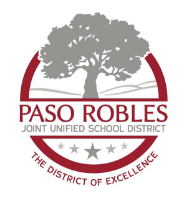Safety Assessment Program
One of the greatest barriers to maintaining school safety is the “code of silence.” This is often followed by students, and even adults, who believe that it is wrong or improper to report or tell on others who are involved in or considering potentially harmful actions.
We encourage all students, parents, and the community to report any information about a situation that may be potentially violent or seriously harmful to a person. While there are many kinds of potentially violent or harmful situations, following are four examples:
- Thoughts or plans for committing a violent attack
- The illegal possession of a weapon
- Suicidal ideas, intentions or plans
- Sexual aggression
If you have concerns about youth or adults who may be considering any of the above-noted actions or any action that could result in serious harm to themselves or others, please report the information to the police or a school staff member (preferably a school administrator). If you perceive the risk as imminent, call 911.
Advantages of a Threat Assessment System
- Shared ownership, shared responsibility and decreased liability. Community agencies have the confidence of knowing that they are in good company and that no one person or agency shoulders the weight of decision making without consultation and support from the others.
- Multi-discipline, multi-agency. Teaming through a multi-agency process allows for many different professional perspectives and resources.
- Expeditious but methodical. Turn around time can be within hours allowing efficient safety planning, supervision and necessary intervention.
- Community collaboration. Community collaboration brings community support into the process and thus decreases the pressure and worry within participating agencies such as schools, mental health and the courts. For example, with the Student Threat Assessment System, collaboration lowers the potential conflict between the schools and parents by reducing the focus on the schools and expanding it to the entire community. Community collaboration allows a united stand.
- Identification of risk in clear terms. The system is defined in language and terms that are common and easily communicated to the public, parents, teachers and students.
- Interventions and supervision strategies that fit the situation and accurately address risk. The goal is an accurate and realistic understanding of situations that pose a risk of violence. Thus the strategies used to decrease that risk are fitting to the situation and not over-reactive or avoidant.
- Adult system increases supervision and awareness of risk within the community; School system safely keeps students in school rather than rely on expulsion or other means to remove them and thus leave them potentially unsupervised. Over 95% of the assessments conclude with a supervision plan that is implemented at an education site.
- Increases both the physical safety and psychological safety of schools and the community. As confidence and a sense of safety increases, teachers, students and community members are better able to teach, learn and work without the distraction of fear.
- Based on research and is legally defensible.
- Recommended by U.S. Department of Education, U.S. Department of Justice, NAAG, IACLEA, NASPA, MHEC, and practitioners throughout the nation.

